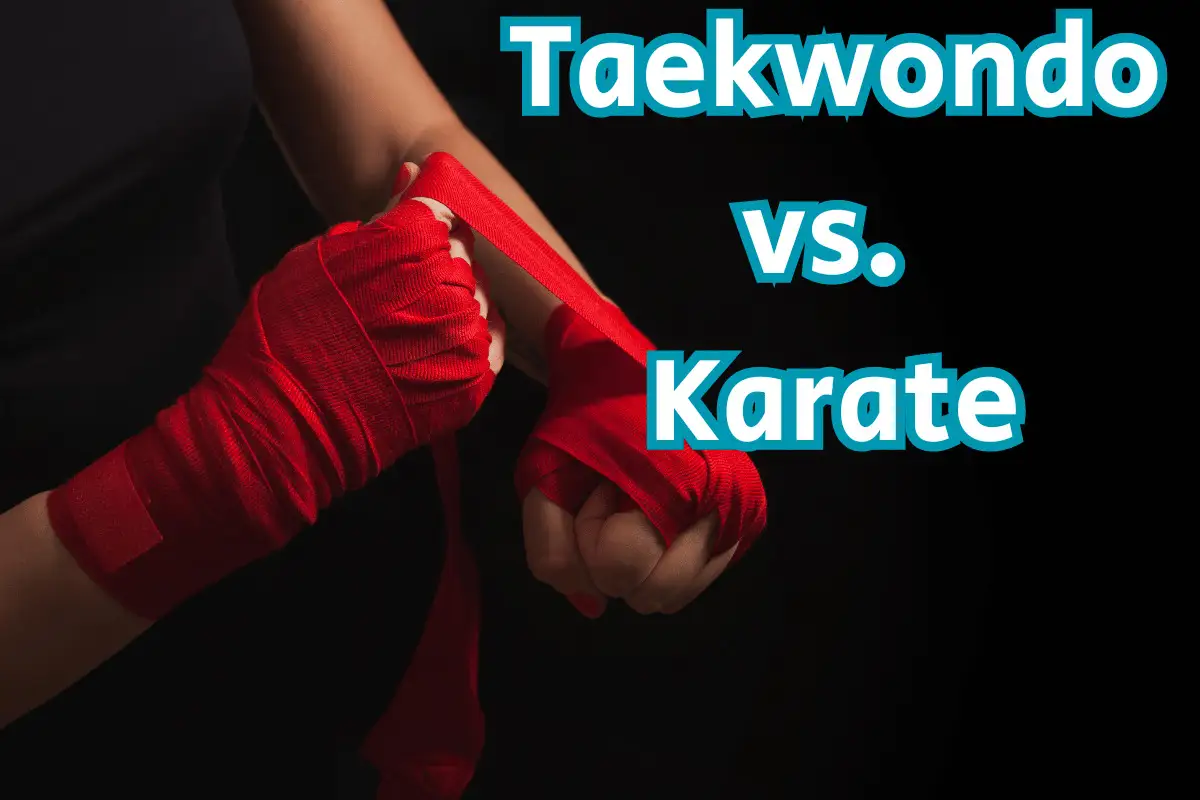Martial arts, with their rich history and different techniques, have long fascinated the human spirit. Among the many martial arts disciplines, Taekwondo and Karate stand out as iconic choices, each offering its unique philosophy, techniques, and benefits. If you’re considering embarking on a martial arts journey, you may find yourself pondering a crucial question: which of these two captivating disciplines is the right path for you?
In this exploration of Taekwondo vs. Karate, we will explore deep into the basis of both martial arts, dropping light on their origins, principles, and practical applications. By the end of this journey, you’ll be armed with the knowledge needed to make an informed decision, one that aligns perfectly with your personal goals and aspirations. So, fasten your symbolic black belt and prepare to enter this informative quest to discover which martial arts resonates most positively with your spirit and objectives.
Understanding Taekwondo
Origins and History of Taekwondo
Taekwondo, with its roots in Korea, has a rich history dating back centuries. It evolved from traditional Korean martial arts and Japanese Karate, eventually forming its unique identity.
Key Principles and Philosophy of Taekwondo
Taekwondo places a strong emphasis on self-discipline, respect, and perseverance. The five tenets of Taekwondo—courtesy, integrity, perseverance, self-control, and indomitable spirit—guide practitioners in their journey.
Focus on Striking Techniques and High, Fast Kicks One of the defining characteristics of Taekwondo is its focus on high, fast kicks and dynamic striking techniques. These techniques are designed for both self-defense and sport, making Taekwondo a thrilling martial art to practice.
Taekwondo’s Importance on Sport and Competition
Taekwondo is widely recognized as an Olympic sport, emphasizing point-based sparring. Competitions are a significant part of Taekwondo training, promoting sportsmanship and excellence.
Exploring Karate
Origins and History of Karate
Karate, originating from the Okinawan islands of Japan, has a deep-rooted history in Japanese and Chinese martial arts. It developed as a practical method of self-defense.
Key Principles and Philosophy of Karate
Karate places a strong emphasis on humility, self-improvement, and the chasing of perfection. The practice is guided by principles such as respect for others and the importance of controlled, correct movements.
Focus on a Variety of Techniques, Including Punches, Strikes, and Blocks Karate encloses a wide range of techniques, including punches, strikes, and blocks. Practitioners develop a solid foundation in these fundamental movements, which are important for self-defense.
Karate’s Emphasis on Self-Defense and Traditional Forms (Katas)
One recognized feature of Karate is its use of katas, choreographed forms that replicate self-defense scenarios. These katas teach practitioners to apply techniques effectively.
Choosing the Right One for You
When standing at the crossroads of Taekwondo and Karate, the decision may seem intimidating, but it’s a choice that should align smoothly with your personal goals and aspirations. Here are several crucial factors to consider when deciding which martial art is the perfect fit for you:
1. Goals and Aspirations
Your martial arts journey should be an impression of your personal objectives. Consider what you aim to achieve through martial arts. Are you primarily interested in improving your physical fitness and flexibility? Do you want to develop practical self-defense skills? Or perhaps you aspire to compete in martial arts tournaments? Identifying your goals is the first step in making an informed decision.
2. Physical Attributes
Recognize your physical attributes and limitations. Taekwondo and Karate may have differing physical demands. Taekwondo, with its emphasis on high, fast kicks, requires good flexibility and agility, while Karate’s different techniques, including punches and strikes, may place more importance on strength and precision. evaluate how your physical abilities align with the requirements of each martial art.
3. Availability
Consider the availability of Taekwondo and Karate schools and instructors in your area. The convenience of location and class schedules can greatly influence your ability to maintain a constant practice. Explore the options available to you and choose the one that fits smoothly into your daily life.
4. Expert Advice
Look for guidance from experienced martial artists or instructors who can provide valuable insights based on your specific circumstances. Discuss your goals, physical attributes, and any concerns you may have. Their expertise can help guide you in the right direction and provide clearness in your decision-making process.
By assessing these critical factors, you’ll be better equipped to make an informed decision regarding which martial art, Taekwondo or Karate, is the perfect fit for your personal journey.
Comparing Taekwondo and Karate
When faced with the choice between Taekwondo and Karate, it’s important to understand the key differences and similarities between these two martial arts. Each discipline has its unique characteristics, techniques, and philosophies. Here, we’ll delve into a comparative analysis of Taekwondo and Karate to help you gain a deeper insight into what sets them apart:
1. Techniques and Styles
Taekwondo
Known for its strong and explosive style, Taekwondo places a significant emphasis on high, fast kicks. Practitioners of Taekwondo are famous for their incredible flexibility and agility, allowing them to execute powerful kicks with precision.
Karate
Karate, in contrast, is a martial art that encompasses a wide range of techniques. These techniques include punches, strikes, and blocks, in addition to kicks. Karate practitioners focus on mastering a variety of movements and strikes.
2. Training Methods
Taekwondo
Taekwondo training often involves sparring and practicing forms (known as poomsae or tul). Sparring sessions in Taekwondo tend to emphasize kicking techniques, offering practitioners the opportunity to sharpen their kicking skills against live opponents. Forms are choreographed patterns of movement that help reinforce techniques and improve balance and coordination.
Karate
Karate training incorporates a mix of sparring and kata practice. Kata is a series of pre-arranged movements and techniques performed in a specific sequence. Katas are essential to Karate and provide a structured way for practitioners to perfect their techniques, footwork, and breathing.
3. Kata vs. No Kata
Taekwondo
Taekwondo does not have a kata system similar to Karate. Instead, it places more emphasis on sparring, drills, and free-form techniques. The absence of kata allows Taekwondo practitioners to focus on the quick execution of kicks and strikes.
Karate
Kata, as mentioned earlier, is a foundation of Karate training. Practitioners perform kata to internalize techniques, increase muscle memory, and achieve accurate and controlled movements. Kata also helps develop concentration and discipline.
4. Belted Journeys
Both Taekwondo and Karate employ a belt system to signify a practitioner’s skill level and progress. While the specific ranking systems and belt colors may change between schools and organizations, both martial arts share this tradition as a means of tracking and recognizing a student’s advancement.
Benefits of Taekwondo
- Improved Flexibility and Agility
- Cardiovascular Fitness and Endurance
- Opportunities for Olympic-Level Competition
- Building Self-Confidence and Discipline
Benefits of Karate
- Practical Self-Defense Skills
- Developing a Strong Foundation in Striking and Blocking Techniques
- Preservation of Traditional Martial Art Values
- Personal Growth and Mental Discipline
Making Your Decision
- Weighing the Pros and Cons of Taekwondo and Karate Based on Your Goals
- Trying Out a Class or Two in Each Martial Art to Get a Feel for Them
- Seeking Guidance from Martial Arts Experts or Instructors
- Trusting Your Instincts and Making an Informed Decision
Conclusion
The journey into the world of martial arts is a breathtaking and transformative one, regardless of whether you choose Taekwondo, Karate, or another discipline. Remember that your choice should reflect your goals and aspirations, and the commitment you bring to your practice matters more than the specific martial art you select. Embrace this journey with enthusiasm, take that first step, and taste a lifetime of physical and mental rewards. In the end, it’s not just about the martial art you choose; it’s about the personal growth, discipline, and self-discovery that await you on this path.

